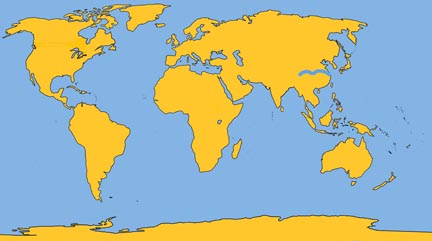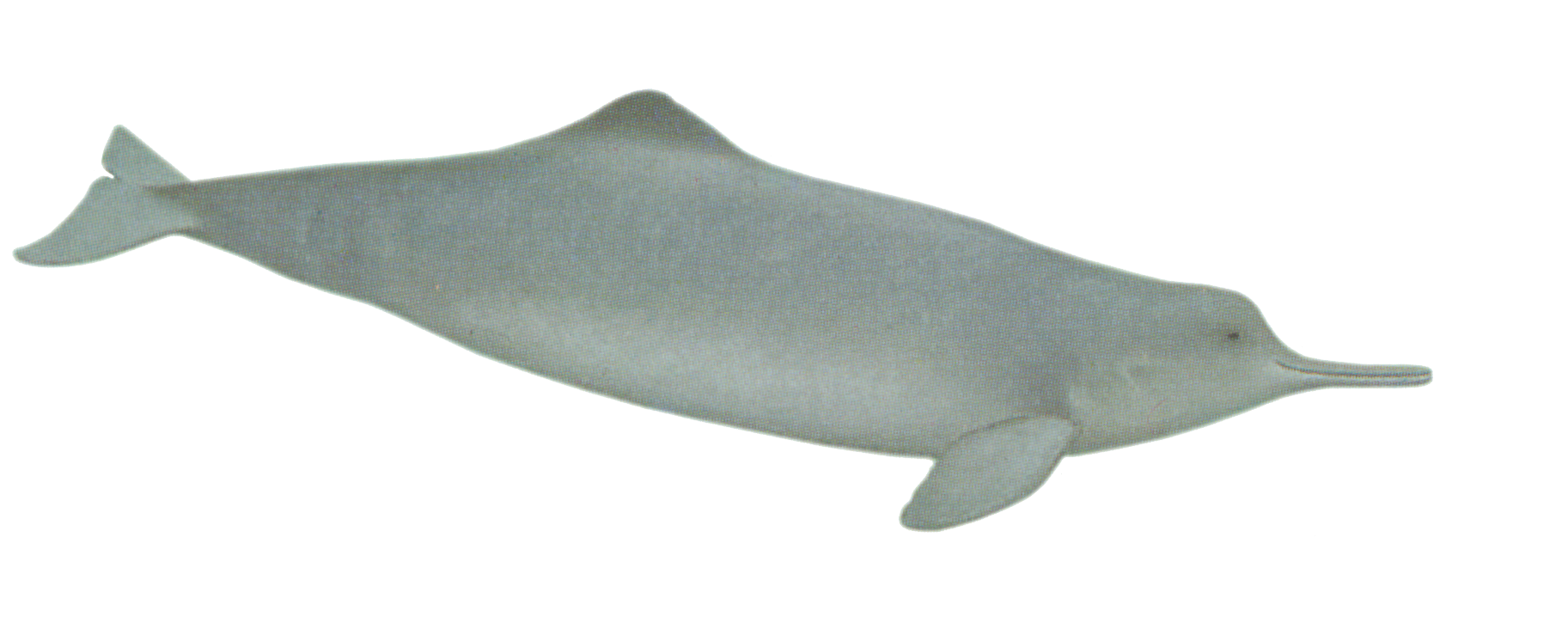Whitefin Dolphin
Chinese River Dolphin
Family: Platanistidae
Genus: Lipotes
Species: L.vexillifer Miller, 1918
Because the Baiji is indigenous to the waters within the People’s Republic of China, western researchers have had little access to it or information concerning its habits and natural history. Moreover, pollution, ship traffic, and the increased diversion of water have all contributed to the near, if not complete, extinction of this species. In January 1980, Chinese researchers from the Institute of Hydrobiology in Wuhan captured one baiji, the first of its kind in captivity. It died of natural causes in 2002. In 2007, a researcher photographed an animal almost certainly to be a baiji, but if, in fact, it were a baiji, there are doubtless too few animals left in the wild to successfully reproduce. Another was captured and placed in a river pen, but was killed when the river flooded during a major rainstorm. Much of the information here comes from the data provided by the researchers who have over the years studied animals in the wild as well as the specimen that was held in captivity.
Physical Description: Like the Amazon River dolphin, the baiji is stocky with a long, thin, flattened rostrum bowed slightly upward. The blowhole is slightly to the left of the center of the forehead. This animal develops a thick fat layer during winter.
Color: The gray or bluish-gray dorsal region blends to white ventrally.
Fins and Flukes: The dorsal fin is a triangular rise in the mid-back region. The flippers are small, wide, and rounded at the tips. The flukes are well developed, pointed at the tips, with a small median notch.
Length and Weight: These animals reach 7 to 8 ft (2.1 to 2.4 m) and 180 lb (82 kg); females are slightly larger.
Teeth: About 31 to 36 teeth per side are found on each side of the upper and lower jaws. The fact that the teeth are wrinkled was previously thought to indicate that food is crushed prior to ingestion. Past observations confirm that food is swallowed whole and uncrushed.
Feeding: They feed on eel-like scaly catfish, caught near the bottom.
Breathing and Diving: While swimming they breathe every 5 to 30 seconds; the longest times dive was one minute.
Mating and Breeding: Fully developed fetuses have been found measuring 22.5 in (57 cm) in length and weighing slightly over 10 lb (4.5 kg). The gestation period is 6 months, very short for dolphins.
Herding: Historically, they were almost always found in pairs, but groups of up to 10 had been sighted.
Distribution: The Baiji were found almost exclusively in the middle and lower regions of the Yangtze and Quintangjiang rivers. These very shy animals are thought to be extinct in the wild due to heavy incidental killings. They moved about within their distribution, depending on their needs, to areas suitable for feeding, or for mating and breeding. They were often found near sandbanks.
Migration: No information available.
Natural History Notes: The Baiji possesses a highly developed echolocation faculty. These highly intelligent and gregarious dolphins are thought to live about 30 years.








